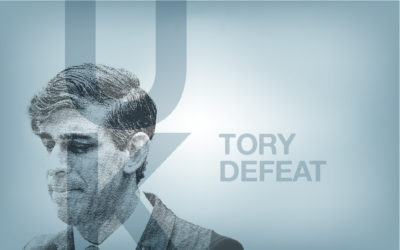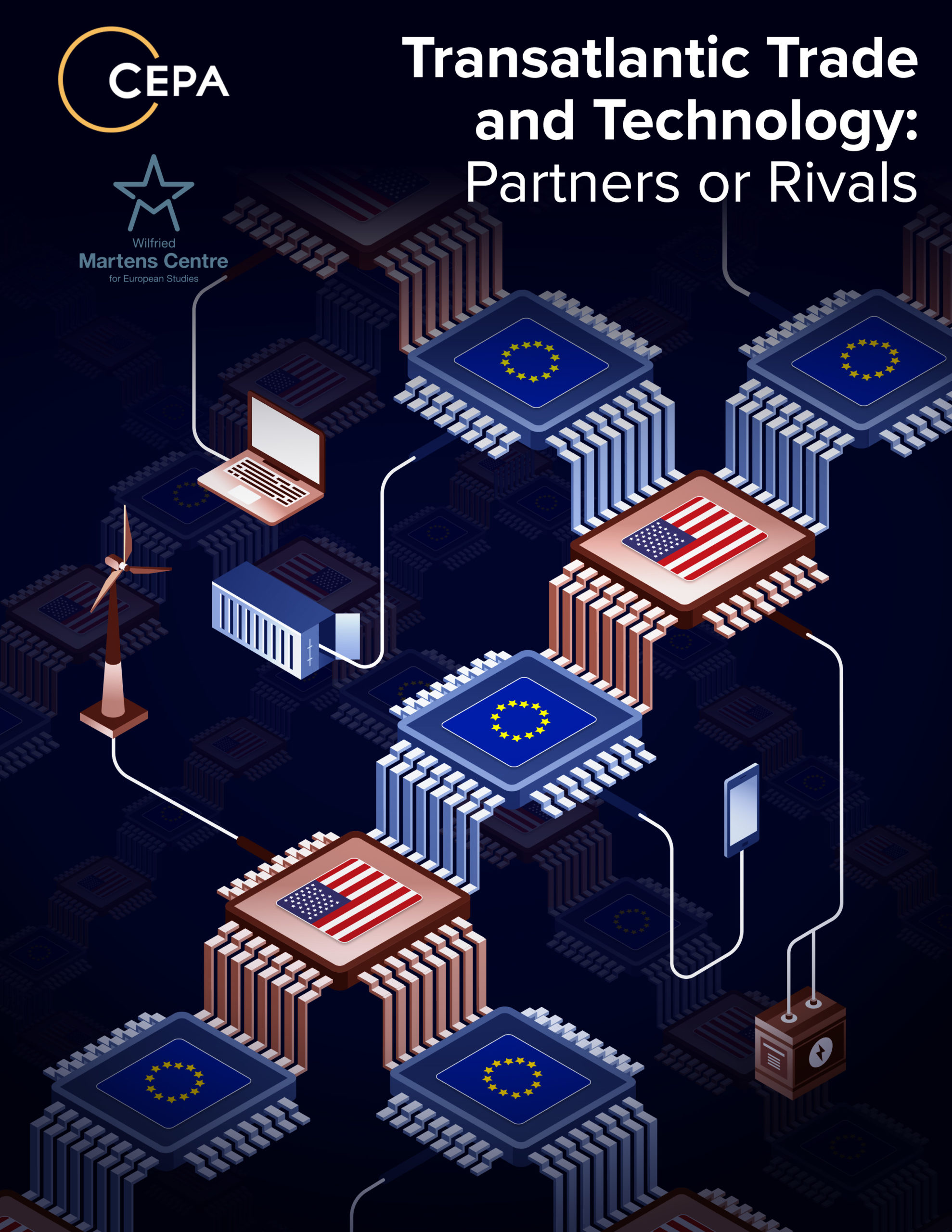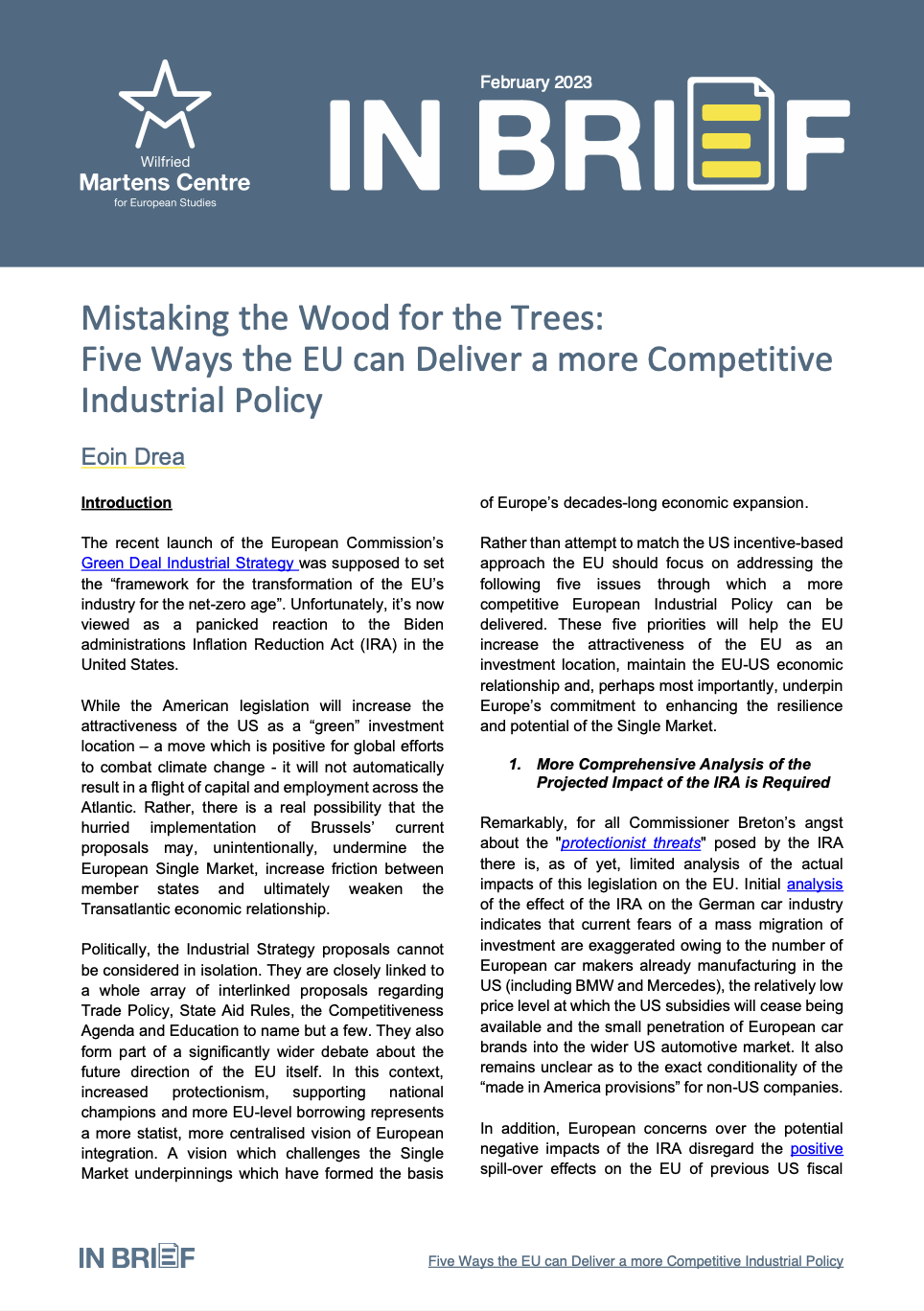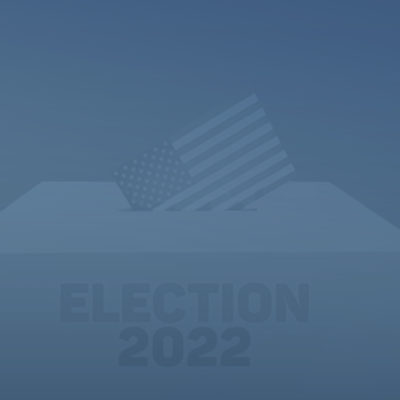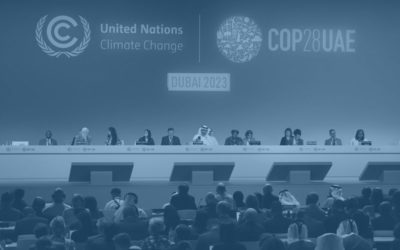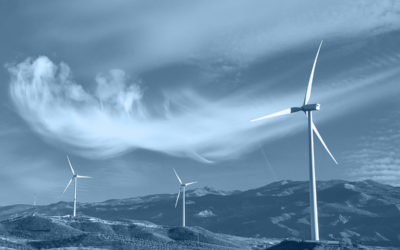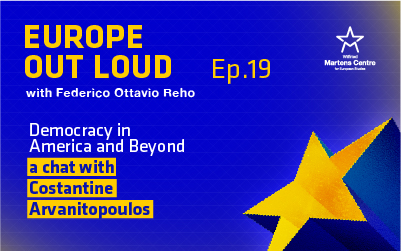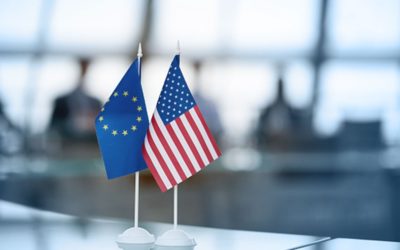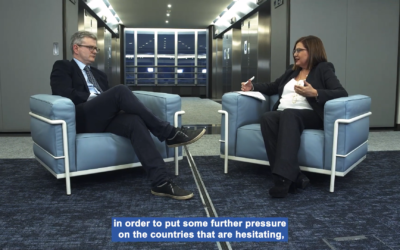Avoiding a Net-Zero Sum Game in Transatlantic Relations
05 April 2023
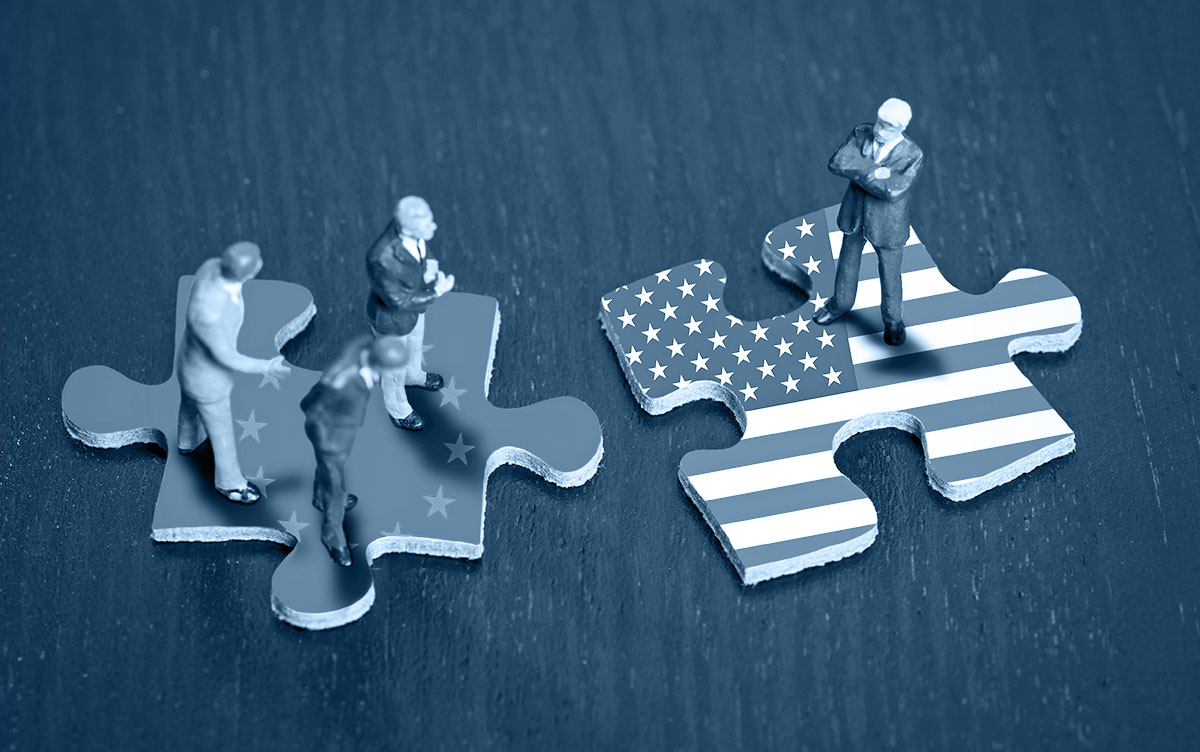
The US Inflation Reduction Act of 2022 (IRA), after being welcomed initially, has created some irritation in Europe. The IRA’s aim was appreciated, but the instruments were confusing. The difference in approach between transatlantic partners forced the EU to seek a counterbalance. The European Commission has come forward with a proposal for a Green Deal Industrial Plan, which is considered an immediate response to the American legislation. Is this game positive for climate? Or will it be a zero-sum game, resulting in different implementation on either side of the Atlantic and with competing instruments, less positive for the climate?
The EU is a leader in climate policies and has the most effective mechanisms to promote a green transition. The energy sector and highly emitting industries are covered by the Emission Trading System, and must buy CO2 permits which have been reaching ever higher prices. In order to shelter these companies from the competition of imported, CO2-intensive products, the EU has introduced the Carbon Border Adjustment Mechanism. In principle, the system is complete. Other countries are incentivised to introduce a carbon price, which if paid would count within the EU. If EU policies are reciprocated universally, then the reduction of harmful emissions globally would be most efficiently addressed.
Climate was always an area of some frictions in transatlantic relations. The EU was at the forefront of climate actions. The US was an indispensable, but difficult partner in international climate discussions. One needs only to remember the beginning of UNFCCC negotiations and the Kyoto Protocol. But Europeans have been surprised by the fact that recent positive climate measures in the US have taken forms which contrast EU efforts. The American approach incorporated in the IRA is based on subsidising the uptake of climate-friendly technologies and production. This approach is linked – in some cases – to local content requirements, or LCRs. And this difference between the US and the EU is difficult to ignore. European companies are asked to pay punitive CO2 charges, and could only evade these payments by investing in clean technologies. Like in the US, there are public subsidies in the EU to help them. Obviously, the ETS revenue should be at least partially used to embark on the green transformation, but who receives it, how much and for what, depends mostly on member state governments. Thus, those who receive public aid are not necessarily the most significant to the green transformation in Europe.
In the US, the IRA enables support for interested companies in green investments and production. Paying for emissions is limited to only a few states. This difference can have an impact on business decisions. European businesses are free to consider where to invest in some promising new technologies. The IRA framework makes the use of public funds uncomplicated, provides more clarity, already at an early stage, and it happens in the investment-friendly environment of the US.
The European Green Deal has not placed a focus on these aspects at its early stage. This resulted, at the beginning of 2023, in the rushed European response to the American IRA in the form of an EC Communication on the Green Deal Industrial Plan, containing reference to important components, i.e., the Net Zero Industry Act (NZIA) and the Critical Raw Materials Act (CRM Act). The overall package provides a framework addressing issues exposed by the different approaches on either side of the Atlantic.
Is the European reaction adequate or should it counter American measures more aggressively? Are all the elements of the Green Deal Industrial Act a sufficient reaction to changed rules of the game? The “tit-for-tat”, according to game theory, might be an optimal reaction in some cases. It can pay off if one of the sides reciprocates with what the other has done. In the prominent book “The Evolution of Cooperation”, Robert Axelrod underlines the importance of taking into account an iterative nature of the game. Transatlantic relations between two of the most closely linked democracies will continue, and reciprocal measures should be considered with this in mind. Axelrod underlines that a successful strategy, even if based on retaliation, should be non-envious. In this particular game, the EU retaliates with respect to measures that have upset European industry, but it should also think about what its next moves should be to avoid a negative outcome.
Transatlantic cooperation must also be seen in the global context of rivalry, including with China, for raw materials and control of important components of global value chains. First of all, the EU should not shoot itself in the foot by doing things which would negatively affect its own economy. Distorting the EU Single Market would be one such negativity. The European response to the American IRA does not yet include new money. Therefore, it is criticised by business as insufficiently impactful. Fortunately, Europe is not accelerating the subsidy race. If others are introducing suboptimal policies, Europe should not necessarily imitate them. Some measures in American industrial policies can easily be considered inefficient and the EU should not simply mimic them, but instead concentrate on how to do better. Ambitious European thresholds of self-sufficiency, in relation to major critical raw materials, can be considered as analogous to LCRs of the American IRA, however they are targets without strong mechanisms of implementation.
The public aid within the American IRA must be seen in the context of overall simpler conditions of investing in the US. The EU has rightly avoided mobilising new funds. Public aid is already offered in various forms by the EU and its member states in amounts exceeding what the IRA provides. Measures to speed permissions and approvals, focus on new skills, the flexibility of changing jobs, and up-skilling, i.e., changing the investment environment in Europe, should help to avoid a zero-sum as an outcome of this regulatory game.
ENJOYING THIS CONTENT?




